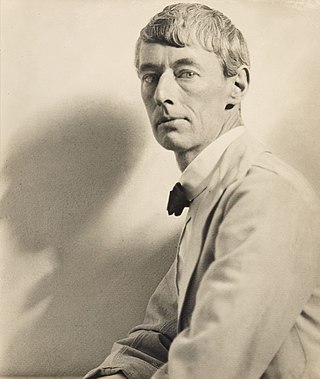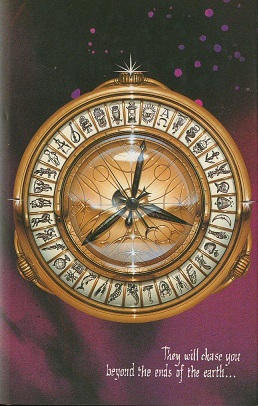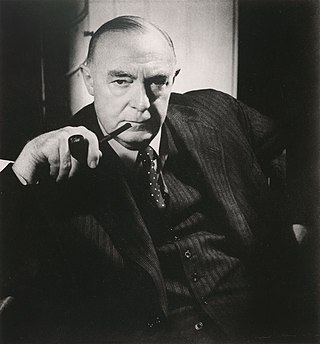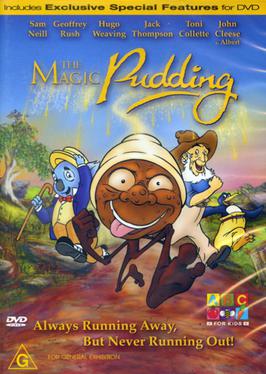
The bunyip is a creature from the aboriginal mythology of southeastern Australia, said to lurk in swamps, billabongs, creeks, riverbeds, and waterholes.

Sir Philip Nicholas Outram Pullman is an English writer. His books include the fantasy trilogy His Dark Materials and The Good Man Jesus and the Scoundrel Christ, a fictionalised biography of Jesus. In 2008, The Times named Pullman one of the "50 greatest British writers since 1945". In a 2004 BBC poll, he was named the eleventh most influential person in British culture. He was knighted in the 2019 New Year Honours for services to literature.

Pudding is a type of food. It can be either a dessert or a savoury dish served as part of the main meal.

Norman Alfred William Lindsay was an Australian artist, etcher, sculptor, writer, art critic, novelist, cartoonist and amateur boxer. One of the most prolific and popular Australian artists of his generation, Lindsay attracted both acclaim and controversy for his works, many of which infused the Australian landscape with erotic pagan elements and were deemed by his critics to be "anti-Christian, anti-social and degenerate". A vocal nationalist, he became a regular artist for The Bulletin at the height of its cultural influence, and advanced staunchly anti-modernist views as a leading writer on Australian art. When friend and literary critic Bertram Stevens argued that children like to read about fairies rather than food, Lindsay wrote and illustrated The Magic Pudding (1918), now considered a classic work of Australian children's literature.

Northern Lights is a young-adult fantasy novel by Philip Pullman, published in 1995 by Scholastic UK. Set in a parallel universe, it follows the journey of Lyra Belacqua to the Arctic in search of her missing friend, Roger Parslow, and her imprisoned uncle, Lord Asriel, who has been conducting experiments with a mysterious substance known as "Dust".

Australian literature is the written or literary work produced in the area or by the people of the Commonwealth of Australia and its preceding colonies. During its early Western history, Australia was a collection of British colonies; as such, its recognised literary tradition begins with and is linked to the broader tradition of English literature. However, the narrative art of Australian writers has, since 1788, introduced the character of a new continent into literature—exploring such themes as Aboriginality, mateship, egalitarianism, democracy, national identity, migration, Australia's unique location and geography, the complexities of urban living, and "the beauty and the terror" of life in the Australian bush.

Warrimoo is a medium-sized village in the lower Blue Mountains of New South Wales, Australia, 273 metres above sea level. The state government's electorate is Blue Mountains and the state member is Labor's Trisha Lee Doyle.

Faulconbridge is a village located in the Blue Mountains 77 km west of the Sydney central business district, New South Wales and is 447 metres above sea level. At the 2016 census, Faulconbridge had a population of 4,025 people. At the 2021 cenus, the population had risen to 4,156.
Edward McMaken Eager was an American lyricist, dramatist, and writer of children's fiction. His children's novels were largely contemporary low fantasy, featuring the appearance of magic in the lives of ordinary children.

Night of the Eagle is a 1962 British horror film directed by Sidney Hayers. The script by Charles Beaumont, Richard Matheson and George Baxt was based upon the 1943 Fritz Leiber novel Conjure Wife. The film was retitled Burn, Witch, Burn! for the US release.

Koala emblems and popular culture deals with the uses which have been made of the image of the Koala, such as coins, emblems, logos, mascots and in the naming of sports teams.
The New York Review Books Children's Collection is a series of children's books released under the publishing imprint New York Review Books. The series was founded in 2003 to reintroduce some of the many children's books that have fallen out of print, or simply out of mainstream attention. The series includes more than 80 titles, ranging from picture books to young adult novels. Often reissued with new introductions, writers such as Michael Chabon, Neil Gaiman, and Philip Pullman have all introduced titles in this series.

William Pullman is an American actor. After graduating with a Master of Fine Arts degree in theater, he was an adjunct professor at Montana State University before deciding to pursue acting. He made his film debut in Ruthless People (1986), and starred in Spaceballs (1987), The Accidental Tourist (1988), Sleepless in Seattle (1993), While You Were Sleeping (1995), Casper (1995), Independence Day (1996), Lost Highway (1997), and Lake Placid (1999). He has appeared frequently on television, usually in TV films. Starting in the 2000s he has also acted in miniseries and regular series, such as Torchwood (2011), starring roles in 1600 Penn (2012–13) and The Sinner (2017–2021). In 2021, he had a recurring role in the miniseries Halston.
Albert E. Collins was an Australian painter, teacher and actor born in New Zealand. After a successful career in painting and teaching he joined ABC radio, where he gave pleasure to a generation of children as "Joe" of the Children's Session and the main character in the long-running serial "The Wide-awake Bunyip".

Sydney George Ure Smith OBE was an Australian arts publisher, artist and promoter who "did more than any other Australian to publicize Australian art at home and overseas".
Eleanor Katrine Witcombe was an Australian writer who worked extensively in radio, film and television.

The Magic Pudding is a 2000 Australian animated musical adventure comedy film loosely adapted from the 1918 book of the same name by Norman Lindsay. Directed by Karl Zwicky, the film features an voice cast of well known actors including Sam Neill, Geoffrey Rush, Hugo Weaving, Jack Thompson, Toni Collette and John Cleese.
This article presents a list of the historical events and publications of Australian literature during 1918.
H. A. Lindsay (1900–1969) was an Australian writer for children who was born in Hyde Park, South Australia.

My Little Pony: Best Gift Ever is a double-length Christmas-themed special based on the animated television series My Little Pony: Friendship Is Magic, taking place in-between seasons eight and nine. It premiered on October 27, 2018 on Discovery Family.














